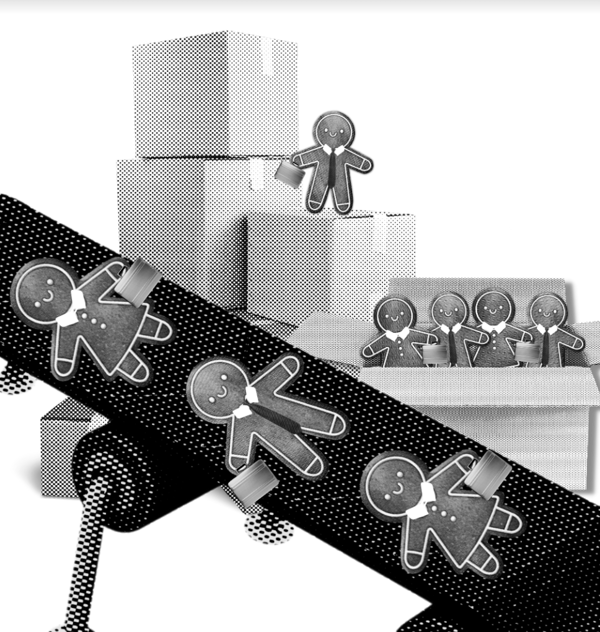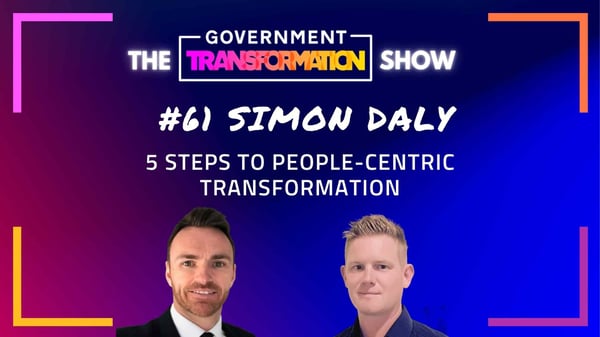Transforming organisations through people
Unlocking employees' potential is an essential move if public sector organisations want to avoid the “great resignation”. For public sector organisations to become “future-fit”, they must be able to listen to their people and align their HR transformations accordingly.
 According to Simon Daly, Employee Experience Strategist at Qualtrics, organisations do not need radical new approaches to empower staff but, instead, they should consider making small additions throughout the employee lifecycle in their day-to-day working life.
According to Simon Daly, Employee Experience Strategist at Qualtrics, organisations do not need radical new approaches to empower staff but, instead, they should consider making small additions throughout the employee lifecycle in their day-to-day working life.
Speaking at the Government People Show, a 6-day online conference bringing together 300 public sector HR professionals, Daly said that “getting it right” will allow organisations to drive engagement, collaboration and, ultimately, enable people to be more adaptable and productive through times of change.
“Employees are now in the driving seat when it comes to how and who and where they want to work,” Daly said during a presentation in the Government People Show. “The ability to move employers or departments is much easier and people will move if they don’t get the flexibility they need.”
Key HR transformation trends
Although there are clear differences between the public and private sectors’ HR spaces, each shine a light on each other’s challenges.
Recent research by Qualtrics on private sector HR transformation shows four key trends. Firstly comes what has been dubbed as “the great resignation”: people, particularly those in leadership positions, are moving to organisations where they feel they might be treated or paid better, will have more promising career opportunities, and can achieve a better work-life balance.
Another trend relates to the employee’s demand for better physical and digital workspaces, which will in turn drive the digital transformations on how people work. “Hybrid working is here to stay and people want the technology to enable them to be effective, wherever they are,” Daly told the audience. “They also need a very compelling reason to go into the office.”
Thirdly, private sector HR departments are seeing an increased focus on employee wellbeing: staff want the ability to disconnect and have less screen time. The fourth trend is a growing demand for action on diversity, equity, inclusion and belonging (DEIB): DEIB is not only increasingly important within the employee lifecycle but also in the recruitment processes.
Within the public sector, Qualtrics has also identified four core HR transformation themes. Number one relates to the much talked about “levelling up” government driven agenda. HR departments and the wider government are still grappling with the concept and how and when it will happen.
The second theme revolves around headcount reductions and the impact that it will have in operational delivery. A third trend is the continuous talent gap as people move to other industries where their skills are better remunerated. Lastly, Qualtrics says that becoming more citizen-centric is an existing key trend which is driving people transformation strategies from a public sector people perspective.
How to unlock people potential
Considering the above HR transformation trends, Daly said that there are different ways in which organisations can unlock people’s potential. This includes supporting quality hybrid working that can support employees’ work-life balance. However, to allow this to happen companies need the right technology: “Organisations are nowhere near operating in this space and hence the need for transformation and change,” added Daly.
Another way of unlocking people’s potential is by engaging employees. People want to feel a sense of belonging and connection to their organisations, and the best way of doing this according to Daly is listening and understanding what is most important for them during these transformation times.
Daly believes that for organisations to become genuinely people-centric when undertaking an HR transformation, they should consider taking the following five steps:
- Look at change holistically from the perspective of employees: “mapping this out will really help you identify the opportunities to listen and develop the employees at the right time,” said Daly. “It will also highlight the pain points early as well as identifying those opportunities to listen in a timely way that will allow feedback to help shape activity, not when it’s too late.”
- Listen at the right moment and in the right way. This can be done through automation (e.g. surveys on high-level themes) but also in informal settings when the opportunity arises: “Listening to employees in multiple different ways through a kind of set programme will really help.”
- Get smarter at analysing feedback and routing it to the right people. Gathering feedback is not enough: employees should have a framework that ensures actions will be taken by the people responsible for it: “This will highlight opportunities for learning and development and it may mean that interventions can happen sooner and issues resolved faster.”
- Take action! Everybody in the organisation has a role to play within this HR transformation - it is not just about filling surveys in.
- Communicate what you’re doing. Finally, Daly advised organisations to share with their people how and where you are listening, their wins, and what they are doing.






